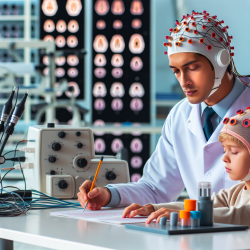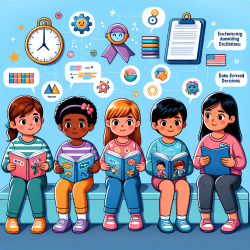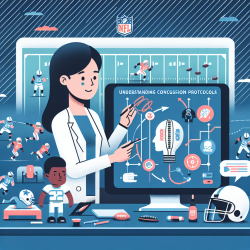Specific Language Impairment (SLI) is a condition that affects a child's ability to understand or produce spoken language without any apparent cause. Recent research has delved into the neurobiological aspects of SLI, shedding light on how auditory event-related potentials (ERPs) can be atypical in children with this condition. This blog post will explore the findings from the study titled "Atypical long-latency auditory event-related potentials in a subset of children with specific language impairment" and discuss how practitioners can use these insights to improve their practice.
The Role of Auditory ERPs in SLI
The study highlights that children with SLI may exhibit atypical long-latency auditory ERPs, which are brain responses to auditory stimuli. These atypical ERPs are particularly evident in children with receptive language impairments. The research utilized intraclass correlation (ICC) as a method to compare individual children's ERPs against a normative waveform from typically developing children. Findings revealed that children with SLI had lower ICCs, indicating less correspondence with the normative waveform.
Key Findings
- A subset of children with SLI showed atypical ERPs, particularly those with receptive language impairments.
- The atypical ERPs were lateralized to the right side of the brain, suggesting differences in cerebral lateralization.
- The ICC was found to be a more sensitive measure than traditional peak latency and amplitude measures for identifying atypical ERPs.
Implications for Practitioners
The findings from this research have significant implications for practitioners working with children with SLI. By understanding the neurobiological underpinnings of SLI, therapists and educators can tailor their interventions more effectively. Here are some practical steps practitioners can take:
- Utilize ERP Assessments: Consider incorporating ERP assessments into your diagnostic toolkit to identify children with atypical auditory processing patterns.
- Differentiated Interventions: Develop targeted interventions that address the specific needs of children with receptive language impairments, as they are more likely to exhibit atypical ERPs.
- Pursue Further Research: Encourage further research into the neurobiological aspects of SLI to refine therapeutic approaches and improve outcomes for affected children.
The Path Forward
This study underscores the importance of understanding individual differences in auditory processing among children with SLI. By leveraging advanced diagnostic tools like ERPs, practitioners can gain deeper insights into each child's unique challenges and strengths. As we continue to explore the neurobiological dimensions of language impairments, collaboration between researchers and clinicians will be key to developing more effective interventions.










